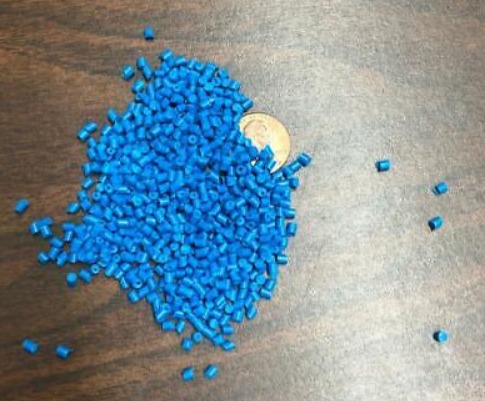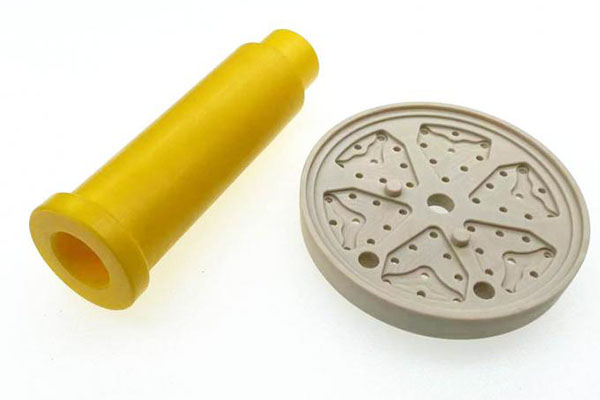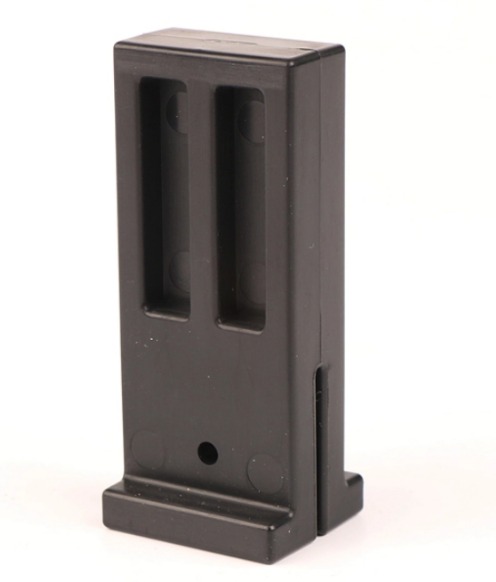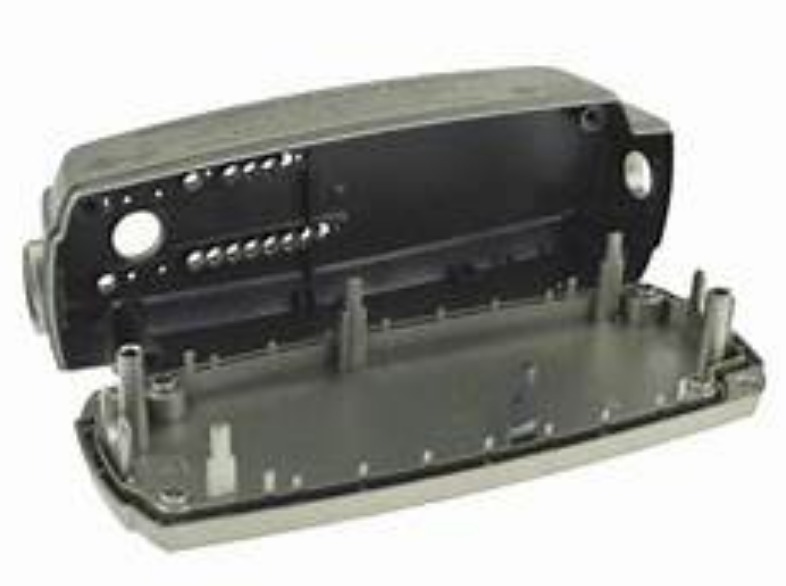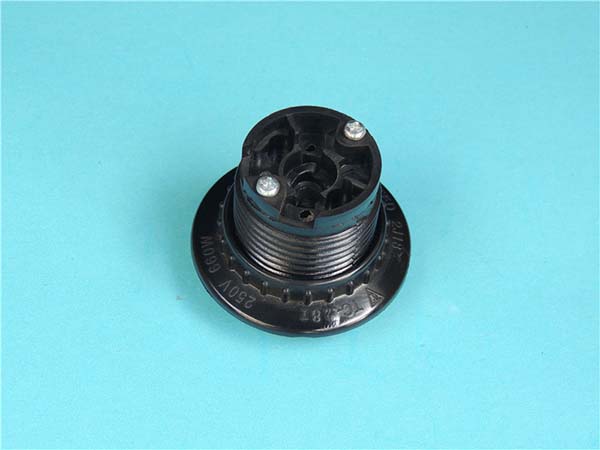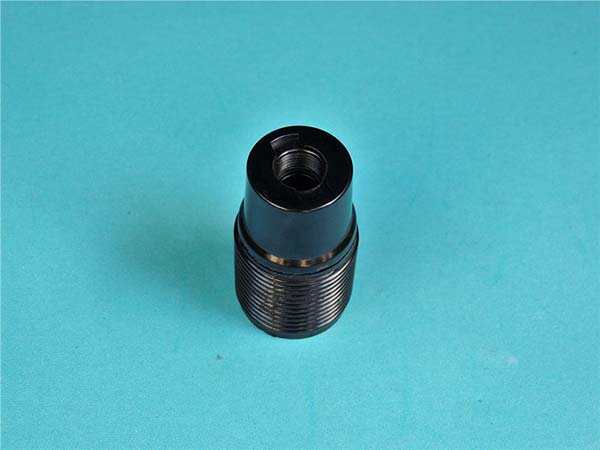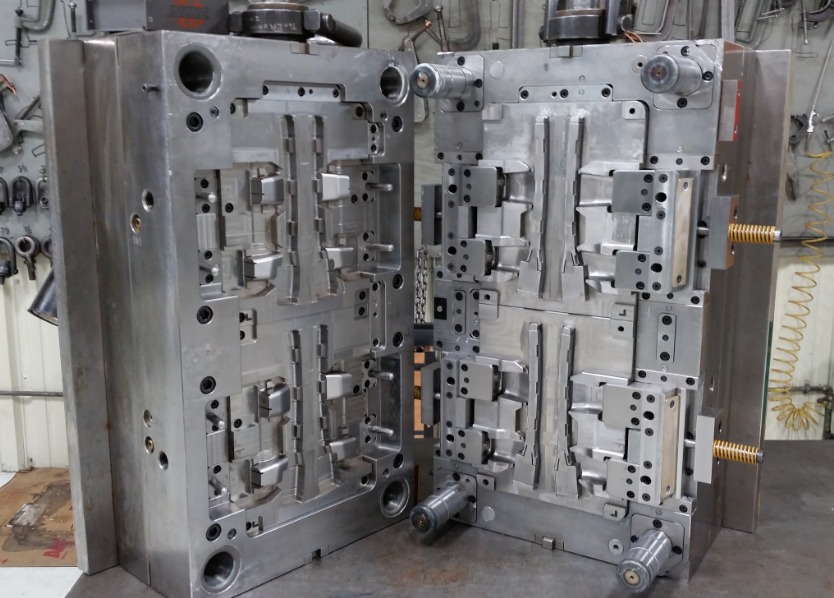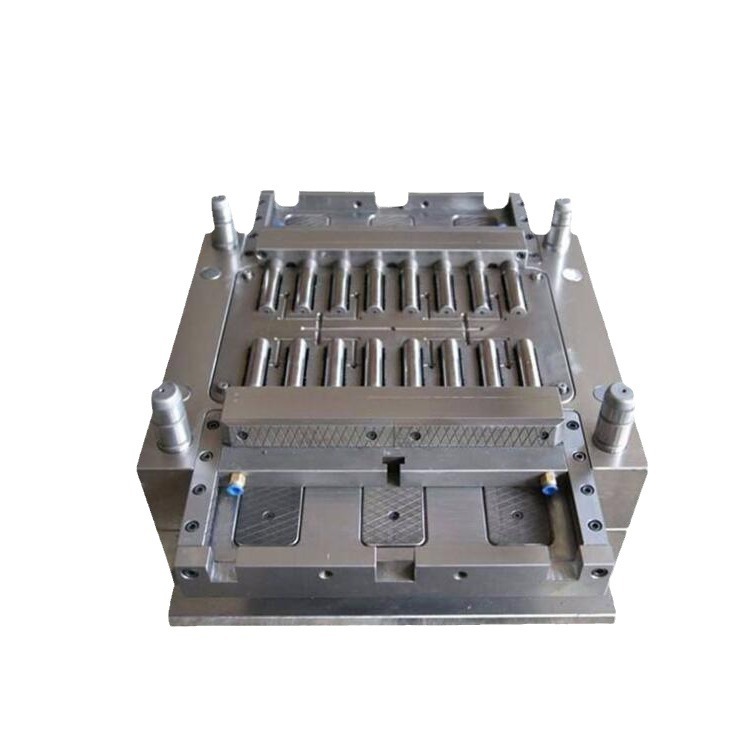What is Polypropylene Pellets Injection Molding
Polypropylene pellets injection molding is a widely used manufacturing process in the plastics industry. At its core, it involves the transformation of polypropylene pellets, a type of thermoplastic polymer, into various three - dimensional products with high precision and efficiency.
The Process Steps
- Feeding the Pellets: Polypropylene pellets are first loaded into the hopper of an injection molding machine. These pellets are typically small, cylindrical in shape, and have a uniform size. For example, a common pellet size might be around 3 - 5 mm in diameter, which allows for easy handling and consistent melting.
- Melting the Pellets: As the pellets move through the heated barrel of the injection molding machine, they are gradually heated. The barrel temperature is carefully controlled, usually within the range of 180 - 250°C for polypropylene. The heat softens and melts the pellets, turning them into a viscous, flowable liquid state. This melting process is crucial as it enables the polypropylene to be easily injected into the mold.
- Injection into the Mold: Once melted, the polypropylene is forced under high pressure (ranging from 50 - 200 MPa, depending on the complexity of the mold and the product design) through a nozzle and into a closed mold cavity. The mold cavity is precisely designed to the shape of the final product, whether it's a simple plastic container or a complex automotive part.
- Cooling and Solidification: After injection, the mold is cooled, usually by circulating water or other cooling media through channels within the mold. As the polypropylene cools, it solidifies and takes on the shape of the mold cavity. The cooling time can vary from a few seconds to several minutes, depending on the size and thickness of the product. For instance, a small plastic toy might cool in just 10 - 15 seconds, while a large automotive interior component could take 1 - 2 minutes to cool and solidify properly.
- Ejection of the Finished Product: Once fully cooled and solidified, the mold opens, and the finished polypropylene product is ejected. This is typically done using ejector pins or other mechanical means, and the product is then ready for further post - processing if required, such as trimming excess material or adding surface finishes.
This process is highly automated in modern manufacturing facilities, allowing for high - volume production of consistent and high - quality polypropylene products. It offers a cost - effective solution for creating a vast array of plastic items used in industries ranging from consumer goods to aerospace.
Key Characteristics of Polypropylene Pellets in Injection Molding
Exceptional Mechanical Properties
Polypropylene pellets in injection molding offer remarkable mechanical properties. In terms of tensile strength, they can typically withstand forces up to 30 - 40 MPa. For comparison, low - density polyethylene (LDPE) has a tensile strength in the range of 7 - 15 MPa. This higher tensile strength of polypropylene makes it suitable for applications where the plastic part needs to endure stretching or pulling forces. For example, in the production of plastic ropes or industrial straps, polypropylene's strength ensures that these products can handle heavy loads without breaking easily.
The bending strength of polypropylene is also quite impressive, usually around 40 - 50 MPa. When compared to polystyrene (PS), which has a bending strength of about 60 - 90 MPa, polypropylene may seem lower. However, polypropylene has better toughness. In applications such as plastic furniture components, the combination of its bending strength and toughness allows the parts to resist deformation under repeated stress, like when a chair is frequently sat on or moved around.
Good Chemical Resistance
Polypropylene exhibits excellent chemical resistance. It can resist the corrosion of many common chemicals. For instance, it is highly resistant to dilute acids and alkalis. In a laboratory test, when polypropylene samples were immersed in 10% hydrochloric acid and 10% sodium hydroxide solutions at room temperature for a month, there was no visible sign of degradation or change in physical properties. This makes it an ideal choice for chemical storage containers, pipes in chemical plants, and laboratory equipment.
It is also stable in the presence of many organic solvents. While it may be slightly affected by some strong organic solvents like toluene and xylene at high temperatures, at normal operating temperatures, it can maintain its integrity in contact with most solvents used in industrial and consumer applications. For example, in the manufacturing of paint - related products, polypropylene containers can safely store solvents used in paint formulations without being damaged by the chemicals inside.
Low Density and Cost - effectiveness
One of the significant advantages of polypropylene is its low density, which is approximately 0.9 g/cm³. In contrast, materials like polycarbonate (PC) have a density of around 1.2 g/cm³. This low density makes polypropylene an excellent choice for applications where weight reduction is crucial, such as in the automotive industry. Using polypropylene in car interiors can reduce the overall weight of the vehicle, leading to better fuel efficiency.
In terms of cost - effectiveness, polypropylene is relatively inexpensive compared to many engineering plastics. For example, the price per ton of polypropylene is often much lower than that of high - performance plastics like PEEK (polyetheretherketone). This cost - advantage, combined with its good performance characteristics, makes it a popular choice for mass - production applications across various industries, from consumer goods to packaging.
Excellent Molding Processability
Polypropylene has outstanding molding processability in injection molding. Its good flowability allows it to quickly and evenly fill the mold cavity. During the injection process, the melt flow rate (MFR) of polypropylene can be adjusted according to the specific requirements of the product. A higher MFR value means better flowability, which is beneficial for manufacturing complex - shaped products with thin - walled sections. For example, in the production of small, intricate plastic parts like electronic component housings, polypropylene's flowability ensures that every detail of the mold is accurately replicated.
Moreover, polypropylene has a relatively short 成型周期. The time from injection to ejection of the finished product is often shorter compared to some other plastics. This short cycle time not only increases production efficiency but also reduces production costs in high - volume manufacturing scenarios. For a large - scale plastic product manufacturing factory, the shorter cycle time of polypropylene can lead to a significant increase in daily production output.
Applications Across Diverse Industries
Automotive Industry
In the automotive industry, polypropylene pellets injection molding plays a crucial role. For interior components, such as dashboard panels, door trims, and seat covers, polypropylene is widely used. Its low density is a significant advantage here, as it helps in reducing the overall weight of the vehicle. For example, replacing heavier materials with polypropylene in these interior parts can lead to a weight reduction of up to 30 - 40%, which in turn improves fuel efficiency.
In terms of exterior components like bumpers, polypropylene's excellent impact resistance is highly valued. Bumpers made from polypropylene can withstand minor collisions without significant damage. A study showed that polypropylene bumpers can endure impacts of up to 5 - 8 km/h without cracking or deforming, ensuring the safety of the vehicle and reducing repair costs. Additionally, its good chemical resistance protects the bumpers from environmental factors such as road salts and chemicals used in car washes.
Consumer Electronics
In the consumer electronics sector, polypropylene is commonly used for product housings and various internal components. For instance, many smartphone and tablet cases are made from polypropylene. Its moldability allows for the creation of sleek and stylish designs, meeting the aesthetic demands of consumers. The smooth surface finish achievable with polypropylene injection molding gives these devices an attractive look.
Moreover, polypropylene's electrical insulation properties make it suitable for internal electronic components. It helps to prevent short - circuits and ensures the safe operation of electronic devices. In laptop keyboards, polypropylene is used for keycaps and the underlying structure. It can withstand the constant mechanical stress of key presses, with a lifespan of up to millions of keystrokes without significant wear and tear, providing long - term reliability for users.
Packaging Sector
The packaging industry heavily relies on polypropylene pellets injection molding. Plastic bottles made from polypropylene are widely used for storing beverages, chemicals, and personal care products. Polypropylene's chemical resistance ensures that the contents of the bottles are not contaminated. For example, in the storage of acidic beverages like fruit juices, polypropylene bottles maintain their integrity and prevent any leaching of harmful substances into the liquid.
Polypropylene is also used for making various types of packaging boxes. Its stiffness and toughness provide excellent protection for the products inside. A comparison test showed that polypropylene - made packaging boxes can withstand a static load of up to 10 - 15 kg without collapsing, making them suitable for packaging fragile items such as glassware or electronics during transportation. Additionally, its lightweight nature reduces shipping costs, making it an economical choice for manufacturers.
Medical Field
In the medical field, polypropylene is used in a variety of applications. It is commonly used for manufacturing medical device housings, such as those for syringes, blood collection tubes, and diagnostic equipment. Polypropylene's biocompatibility is a key factor here. It does not cause an adverse reaction when in contact with human tissues or bodily fluids, ensuring the safety of patients.
For disposable medical products like surgical gowns, masks, and gloves, polypropylene is an ideal material. It can be easily sterilized, either through gamma irradiation or ethylene oxide sterilization methods, without losing its physical properties. This makes it suitable for use in sterile medical environments. A study on the effectiveness of polypropylene - based surgical masks showed that they can filter out up to 95% of airborne particles, providing a high level of protection for medical staff and patients.
Injection Molding Process Details
Step - by - Step Process Flow
- Raw Material Preparation: First and foremost, high - quality polypropylene pellets are carefully selected. These pellets should be free from impurities and have a consistent size distribution. For example, if the pellets have varying sizes, it can lead to inconsistent melting and flow during the injection process. Before being fed into the injection molding machine, the pellets may need to be dried if they have absorbed moisture. Moisture in the pellets can cause defects such as bubbles in the final product. A typical drying process might involve using a hot air dryer at a temperature of around 80 - 100°C for 2 - 4 hours.
- Heating and Melting: The polypropylene pellets are then fed into the heated barrel of the injection molding machine. The barrel is equipped with heating elements that gradually raise the temperature of the pellets. As mentioned earlier, the temperature in the barrel is usually maintained between 180 - 250°C. The rotation of the screw inside the barrel helps to mix and melt the pellets evenly. The melting process is crucial as it determines the flowability of the polypropylene. If the temperature is too low, the pellets may not melt completely, resulting in a lumpy and inconsistent melt. On the other hand, if the temperature is too high, the polypropylene may degrade, losing its desirable properties.
- Injection: Once the polypropylene is in a fully molten and flowable state, it is injected into the mold cavity. This is achieved by applying high pressure to the screw, which forces the molten polypropylene through a nozzle and into the mold. The injection pressure, typically ranging from 50 - 200 MPa, needs to be carefully controlled. For complex - shaped molds or products with thin - walled sections, a higher injection pressure may be required to ensure complete filling of the mold cavity. The injection speed also plays a role. A fast injection speed can help to quickly fill the mold, but it may also cause air entrapment or excessive shear stress on the molten polypropylene.
- Cooling: After the mold cavity is filled with the molten polypropylene, the cooling process begins. This is usually accomplished by circulating a cooling medium, such as water, through channels within the mold. The cooling rate affects the quality of the final product. A rapid cooling rate can lead to internal stresses and warping in the product, while a slow cooling rate can increase the production cycle time. The optimal cooling time depends on factors such as the thickness and size of the product. For a small, thin - walled plastic part, the cooling time might be as short as 5 - 10 seconds, while a large, thick - walled component could require 30 seconds to a few minutes to cool properly.
- Demolding: Once the polypropylene has cooled and solidified sufficiently, the mold opens, and the finished product is ejected. Ejector pins, which are small rods located within the mold, are used to push the product out of the mold cavity. The design of the ejector pins is important. If they are not properly placed or if the ejection force is too high, it can cause damage to the product, such as cracking or deformation.
Factors Affecting the Molding Quality
- Temperature: Temperature has a profound impact on the injection molding process. The barrel temperature, as mentioned, affects the melting and flowability of the polypropylene. If the barrel temperature is too low, the polypropylene may not flow smoothly into the mold, leading to incomplete filling or surface defects. The mold temperature also plays a crucial role. A higher mold temperature can improve the surface finish of the product, reduce internal stresses, and enhance the fusion of different sections of the polypropylene within the mold. However, a too - high mold temperature can increase the cooling time and may cause the product to stick to the mold. It is recommended to keep the mold temperature within a range of 30 - 80°C, depending on the specific requirements of the product.
- Pressure: Injection pressure and holding pressure are two key pressure - related factors. The injection pressure determines how quickly and effectively the molten polypropylene fills the mold cavity. Insufficient injection pressure can result in short - shots (incomplete filling of the mold). Holding pressure, which is applied after the mold is filled, helps to compensate for the shrinkage of the polypropylene as it cools and solidifies. If the holding pressure is too low, the product may have voids or sink marks. Conversely, if the holding pressure is too high, it can cause excessive stress on the product and the mold, potentially leading to damage.
- Mold Design: The design of the mold is critical for achieving high - quality injection - molded products. The flow channels in the mold should be designed to ensure uniform flow of the molten polypropylene. Sharp corners or narrow passages in the mold can cause flow restrictions and uneven filling. The venting of the mold is also important. Proper venting allows air to escape from the mold cavity during injection, preventing the formation of air pockets or burn marks on the product. Additionally, the mold's cooling channels should be arranged in a way that ensures uniform cooling of the product, reducing the risk of warping.
- Material Properties: The properties of the polypropylene pellets themselves, such as their melt flow rate (MFR), molecular weight, and additives, can affect the molding quality. A higher MFR indicates better flowability, which can be beneficial for complex - shaped products. However, it may also lead to lower mechanical properties. Additives like fillers or reinforcements can change the physical and mechanical properties of the polypropylene, and their proper selection and proportion are essential for meeting the product's performance requirements.
To optimize the molding quality, it is essential to conduct thorough trials and adjust the process parameters accordingly. Regular maintenance of the injection molding machine and the mold can also help to ensure consistent and high - quality production.
Comparing Polypropylene with Other Plastic Materials
A Tabular Comparison
When considering the use of polypropylene in injection molding, it's important to understand how it stacks up against other common plastic materials. Here is a detailed tabular comparison between polypropylene (PP), acrylonitrile - butadiene - styrene (ABS), and polyethylene (PE) in terms of key properties, cost, and processing difficulty:
| Property | Polypropylene (PP) | Acrylonitrile - Butadiene - Styrene (ABS) | Polyethylene (PE) |
| Density (g/cm³) | 0.9 | 1.05 | HDPE: 0.95 - 0.97 LDPE: 0.92 - 0.93 |
| Tensile Strength (MPa) | 30 - 40 | 35 - 62 | HDPE: 20 - 30 LDPE: 8 - 30 |
| Bending Strength (MPa) | 40 - 50 | - | HDPE: - LDPE: - |
| Impact Resistance | Moderate, better at higher temperatures | High, good across a range of temperatures | HDPE: Good, especially at low temperatures LDPE: Flexible and has good impact resistance |
| Heat Resistance (Maximum Continuous Use Temperature) | 90 - 121°C | 54 - 82°C | HDPE: -120 - 80°C LDPE: - |
| Chemical Resistance | Excellent against many acids, alkalis, and solvents | Good, but less resistant to some chemicals compared to PP | HDPE: Good resistance to many chemicals LDPE: Good resistance to most chemicals |
| Cost (Relative) | Low - cost, relatively inexpensive | Medium - cost | HDPE: Medium - cost LDPE: Medium - cost |
| Processing Difficulty | Easy, good flowability in injection molding | Moderate, requires careful control of processing conditions | HDPE: Easy, suitable for various processing methods LDPE: Easy, can be processed by extrusion and injection molding |
| Mold Shrinkage (%) | 1 - 2.5 | 0.3 - 0.8 | HDPE: 2 - 5.0 LDPE: 1.5 - 5.0 |
From the table, it's clear that polypropylene offers a unique combination of properties. Its low density makes it an attractive option when weight is a concern, such as in the automotive and aerospace industries. While its tensile strength is lower than that of ABS, it has better heat resistance, which is crucial for applications where the plastic may be exposed to high temperatures.
In terms of cost, polypropylene is generally more cost - effective than ABS, making it a popular choice for mass - production applications where cost control is important. When it comes to processing, polypropylene's good flowability simplifies the injection molding process, reducing the likelihood of defects and allowing for faster production cycles compared to some other plastics.
This comparison shows that polypropylene has its own set of advantages and is well - suited for specific applications, but the choice of plastic material ultimately depends on the specific requirements of the product being manufactured.
Yigu Technology's Perspective
As a non - standard plastic metal products custom supplier, Yigu Technology highly values polypropylene pellets injection molding. We understand the significance of precise process control in this field. Our advanced manufacturing facilities and experienced technicians enable us to strictly control every step of the injection molding process, from raw material selection to the final product.
We also focus on product customization. With in - depth knowledge of polypropylene's properties, we can tailor products to meet the unique requirements of different customers. Whether it's developing a new product with specific mechanical properties or creating a custom - shaped component, we are committed to providing high - quality solutions.
In terms of industry development, we believe that continuous innovation in materials and processing technologies is crucial. For example, exploring new additives to enhance polypropylene's performance or improving the injection molding process to reduce energy consumption and production costs. We are actively involved in research and development to contribute to the growth and progress of the polypropylene injection molding industry.
